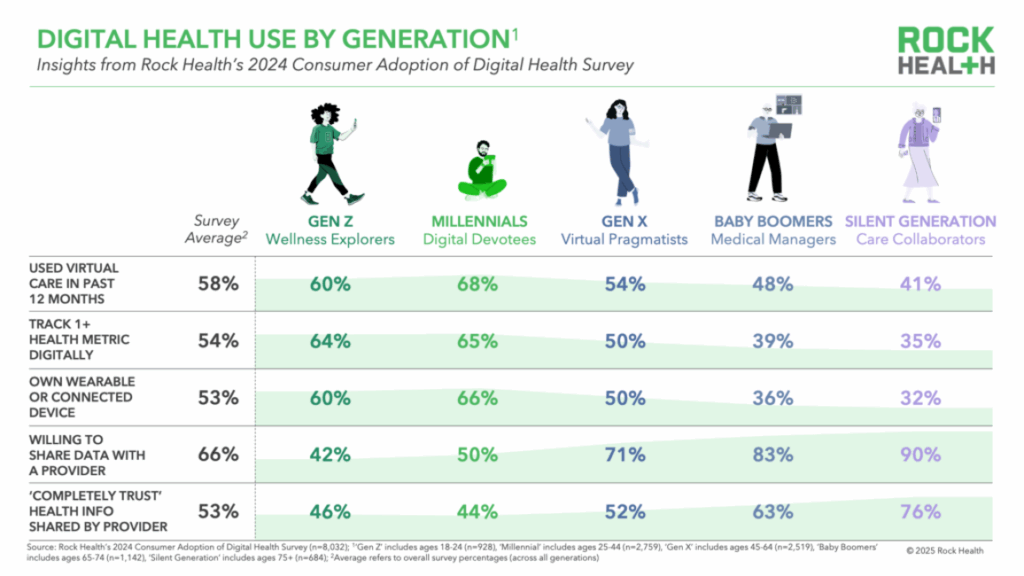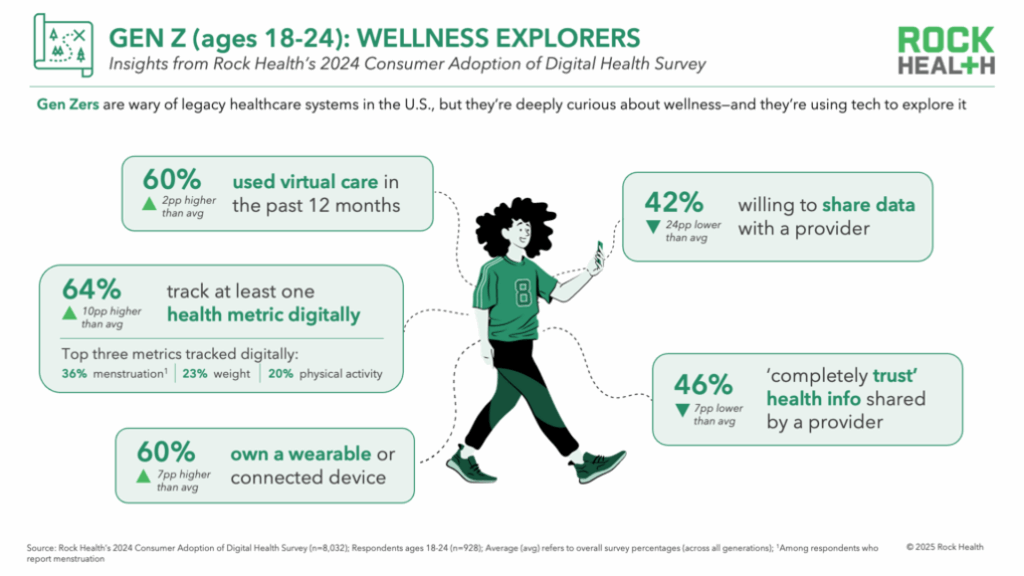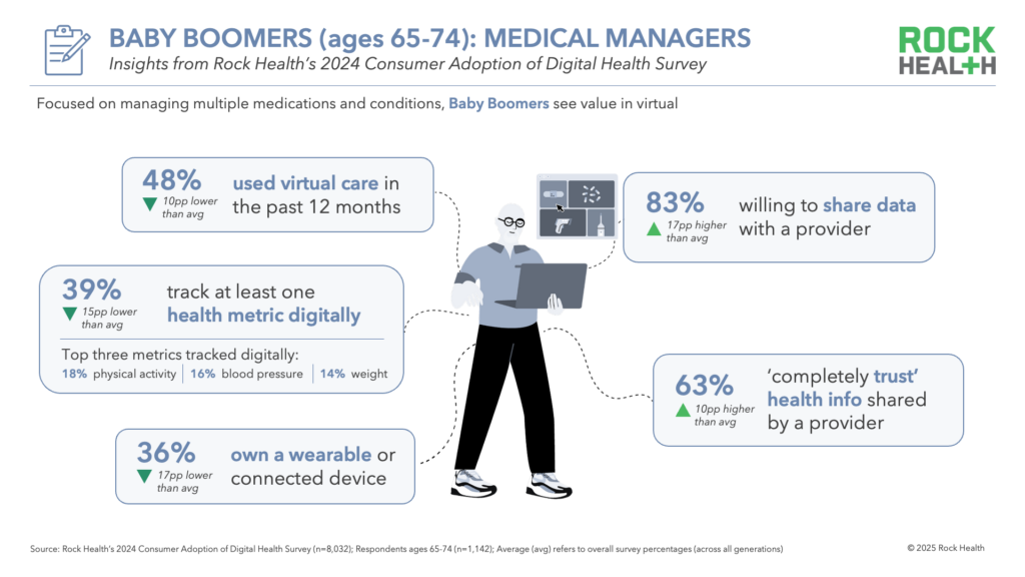In the past year, most consumers in the U.S. have used virtual care, tracked at least one health metric digitally, and own a wearable or connected health device. Digital health has certainly gone mainstream across U.S. consumers, with varying utilization and motivation by generation, we learn in the report, Screenagers to Silver Surfers: How each generation clicks with care from Rock Health.

To segment health consumers by age/generation, the RH team mined the firm’s 10th Consumer Adoption of Digital Health Survey which polled over 8,000 U.S. adults in 2024 on peoples’ perspectives on digital health use — wearable tech, virtual care, data sharing, and so on.

The youngest cohort of health citizens, Gen Z, are Wellness Explorers, Rock Health coins, most owning a wearable or connected device and two-thirds tracking at least one health metric that way — menstruation ranking first, followed by weight and physical activity.
Trust with the health system is lowest among this group and one-up from here – that is…

…The Millennials, only 44% of whom completely trust health information shared by a provider, and only one-half willing to share their data with a provider.
This group of 25-44 year old’s is also keen on digital health in terms of use, thus their moniker of Digital Devotees: two in three have used virtual care in the past year, two-thirds tracking at least one metric, and two-thirds owning a wearable or connected device.

The Gen X health citizens are virtual pragmatists, between 45 and 64 years of age in that Sandwich Generation that is somewhat more trusting , with one-half owning a wearable or connected health device, one-half tracking health metrics (first, physical activity, then weight and blood pressure), and over half using virtual care in the past year.

Next. the Boomers between 65 and 74 are the Medical Managers of the generations, dealing with multiple conditions and mediations — less digitally engaged (one-third with devices and over a third tracking a health metric digitally), and nearly one-half partaking in virtual care in the past year. But trust is high with this group of health citizens: 83% willing to share data with a provider, and 63% completely trusting health information shared by a provider.

Finally, meet the Care Collaborators who are the oldest generation in the report, ages 75 and older. Don’t count these elder health care consumers out when it comes to digital health: 41% had used virtual care in the past year, and one-third are tracking at least one metric — first, blood pressure — and one-third own a wearable or connected device.
Trust is ultra-high among the oldest patients: 90% are willing to share data with a provider, and 76% completely trusting health info shared by a provider. The Rock Health team notes that “trust grows with age.” My read is that by the time we reach our 70s, we’ve had a lot of experience with various components of the health care system and gain savvy and spidey senses if we have paid attention. By the time we’re older, health care is not so transactional — relationships count — and these relationships may play an important bolstering role in our social care as we age. Think: trust, but verify.

Health Populi’s Hot Points: The report’s concluding recommendation is that,
“Consumers aren’t a monolith when it comes to digital health. Each generation engages with technology differently, shaped by their experiences, needs, and levels of trust in the healthcare system. At the same time, age is just one part of the story.”
Increasingly, all generations will be doing more with their own hands and minds and digital tools at home — in collaboration with their health care providers but also (among younger health citizens) more on-our-own in a DIY-sense. The fast-growth of GLP-1 medicines and direct-to-consumer platforms launched by both pharma companies and entrants like Transcarent, Hims & Hers, and Amazon/One Medical are digital front doors for health consumers engaging in shoppable health care that can be self-managed, or at least have high propensity for self-care. My scenario planning with clients this year has made this clearer, my 2×2 matrix shown here for context.
Rock Health notes that the supply side of health care must be end-user mindful, keeping peoples’ values and experiences front of mind and meeting people “where they are.” Some of the oldest patients will be quite conversant with digital blood pressure and heart monitors, medication adherence tools and using voice tech for support at home. Some younger people won’t want anything to do with wearable tech, living more off-the-grid and careful about privacy and information sharing.
But all patients – consumers, citizens, caregivers — in the U.S. and many parts of the world will be keener on self-care and doing more at home and with their families and peer-to-peer relationships in health care and patient groups. The Rock Health analysis gives us a clearer view on some of the nuances across generations, but all growing their digital health muscles for greater health engagement.





 Thank you FeedSpot for
Thank you FeedSpot for